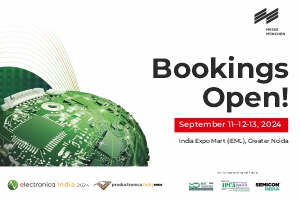With the launch of its very first 3nm chip design facilities in Noida and Bengaluru, India has made a significant leap in semiconductor technology. These cutting-edge facilities were inaugurated by the Ministry of Electronics & Information Technology (MeitY), led by Union Minister Ashwini Vaishnaw, marking a new era in India’s semiconductor sector.
A Notable Milestone in India’s Semiconductor Sector
Renesas Electronics India’s newly established 3nm chip design centres are a milestone for India’s semiconductor technology. Previously India worked on 7nm and 5nm chip designs, but with the change to 3nm technology, the country is among the global leaders in semiconductor technology.
Vaishnaw emphasized that designing at 3nm is truly next-generation, highlighting India’s growing expertise in semiconductor design. The Noida facility, in particular, is expected to play a crucial role on developing a pan- India semiconductor ecosystem, leveraging the country’s skilled workforce. He emphasized the industry’s increasing confidence by pointing to large investments firms like Applied Materials and Lam Research.
Government Strategy and Industry Investments
India’s chip roadmap stretches beyond design, to fabrication, advanced packaging (ATMP), equipment and material supply chains. In developing a self-dependent and globally competitive semiconductor ecosystem, the government is encouraging strategic collaborations, infrastructure development and home-grown innovation.
As part of further enhancing the talent pipeline, Vaishnaw launched a new semiconductor learning kit that was designed to impart engineering students with practical exposure in hardware design. More than 270 educational institutions that are already utilizing cutting-edge EDA (Electronics Design Automation) tools under the India Semiconductor Mission (ISM) will now be provided with these kits.
“Renesas Electronics, CEO, Hidetoshi Shibata, appreciated India’s growing influence in embedded systems as well as semiconductor innovation and said that Indo-Japan strategic partnership would be instrumental in shifting the semiconductor trend globally.”
Conclusion:
India’s opening of 3nm chip design hubs is a landmark moment in the country’s semiconductor journey, placing the country among the world leaders in the field of chip innovation. With its government-supported semiconductor strategy taking root, India is now moving beyond chip design to fabrication, advanced packaging (ATMP) and the materials supply chains, creating a sustainable semiconductor ecosystem.








